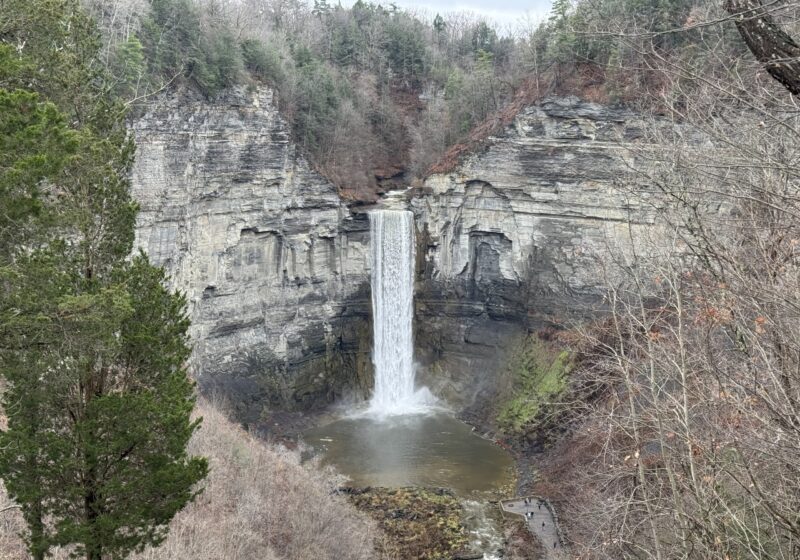At the year’s first Town Hall Meeting, Vice President for Communications Bill Murphy presented new designs for URBee, the Yellowjacket mascot. The redesigned mascot is intended to coincide with the University’s new logo and complement the new athletic “R” spirit mark – a square-serif varsity letter with a yellow body and a blue outline.
“We created a new graphic system around the new logo,” Murphy said. Many students welcome the update for URBee because they thought he appeared too friendly for an athletic symbol. “We want the right combination of formidable and fun,” he said.
Students felt that URBee was too cute compared to other mascots in our athletic division, such as the fierce Washington University in St. Louis Bears or the Emory University Eagles. Since the introduction of the new, professional logo and spirit mark, the need for an updated and improved mascot seemed pertinent.
One question at hand was how and where the new mascot would be implemented. The original plan was to use the mascot on all things pertaining to athletics, including uniforms, equipment, walls, scoreboards, floor/field markings, flags and athletic and printed materials, such as schedules, programs and advertisements. Sportswear and merchandise would also display the mascot, as well as fan-oriented paraphernalia like foam fingers, thunder sticks and towels. Lastly, the graphic mascot design chosen would be the basis for the actual mascot’s costume.
This past summer, the Office of Communications worked to find out what the University’s students, athletes and alumni wanted to change about the mascot, as well as to create varied design options for the new mascot.
“We did some homework with the previous URBees and what other schools had,” Murphy said. “We had some possibilities sketched up and showed them to students who were here this summer. We tried to diversify the students we surveyed. We talked to students and staff in various activities, athletics and admissions. We made some first round sketches and, because of the group’s reactions, we decided we had to hear from a bigger student group. That’s why we held the meeting.”
One problem Murphy cited, in reference to the current Yellowjacket, was that it resembles a bumblebee instead of an actual yellowjacket. It lacks certain anatomical features such as a prominent stinger. It also has small wings on either side. An important factor in designing the new Yellowjacket was to research the mascot designs of other schools that features Yellowjackets, such as Graceland University, Georgia Institute of Technology and Waynesburg University. Unlike UR’s design, these characters had a hornet-based design. Over the summer, students reacted positively to these schools’ designs, prompting the Communications staff to create a more hornet-like Yellowjacket.
Another influence while creating trial mascots was the need for originality. While other schools’ mascots were appreciated for ideas, it was important not to copy these other Yellowjackets in UR’s new design. Graphics Coordinator for Communications Michael Osadciw designed many of the candidates for the new mascot. Some of these ideas played upon more humorous versions of URBee, such as a “U of ARG!” pirate-styled yellowjacket. Another prototype was an armor-clad, robot-like yellowjacket. The pirate yellowjacket was eliminated, but the metallic robot was chosen to be displayed in the Town Hall Meeting.
At the meeting, the Communications staff introduced some ideas for the new Yellowjacket in successive rounds. In the first round, four hornets were shown. Three displayed the Spirit R on college jackets and one Yellowjacket was in a flying position with an R on his armband. Two had their arms raised in a number one position and two had arms raised in a punching position. The response was that the Yellowjacket looked more like a hornet, which was good, but in order to inspire fear in our opponents, it needed to be more aggressive.
The second round presented more muscular yellowjackets, with enlarged stingers, clenched fists and angrier expressions. In the third round, the possible mascots were refined and detailed. Originally, 250 mascots had been designed.
By the third round, only nine designs remained. Those nine were the nine presented at the Town Hall Meeting. The expectation was that by the end of the meeting, a new mascot design would be chosen.
After a slideshow presentation detailing the three rounds of elimination, Murphy showed the group the nine possible mascots that remained. The floor was then opened for discussion and the students voiced their opinions and suggestions. The majority of students seemed to be torn between two of the designs: a more classic design of the Yellowjacket wearing a college letter sweater with the “R” spirit mark on its chest and clenched fists and a more modern design featuring the Yellowjacket in a simple and sleek flying position.
The students tossed around the idea of having two distinct mascots. The first would be a simplistic mascot for certain uses, such as football helmets, the sides of buses and possibly an attachment to the new logo. The classic Yellowjacket design would be reserved for sweatshirts and the actual mascot costume. After some discussion, however, this idea was deemed too confusing and inconsistent with the Office of Communications’ vision of a unified graphic system.
Originally, only the students who attended the meeting were going to vote on the new mascot. However, after seeing how opinionated the students were about the various Yellowjackets, Murphy decided to open the vote up to the entire student body as well as alumni.
The vote will be similar to the voting for the new logo, but with no comments section, in order to expedite the voting process. Four to five possible new mascots, chosen from the nine shown in the Town Meeting, will be available to choose from. Students and alumni will be able to rank their choices and the design that receives the most votes will become UR’s new mascot.
Schneier is a member of the class of 2011.


